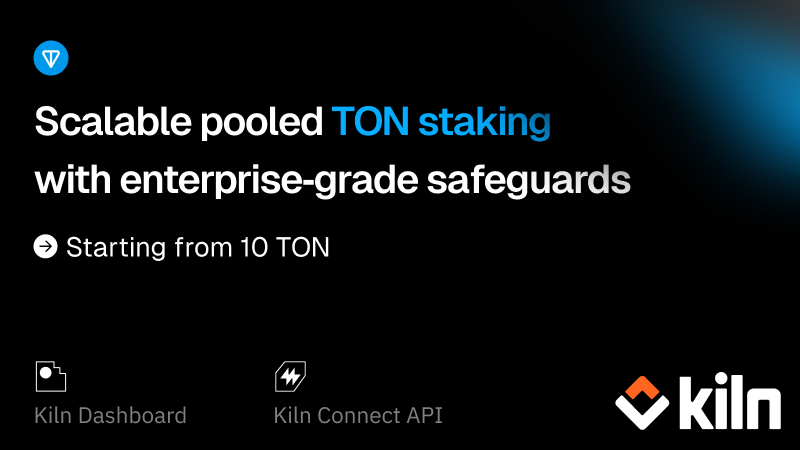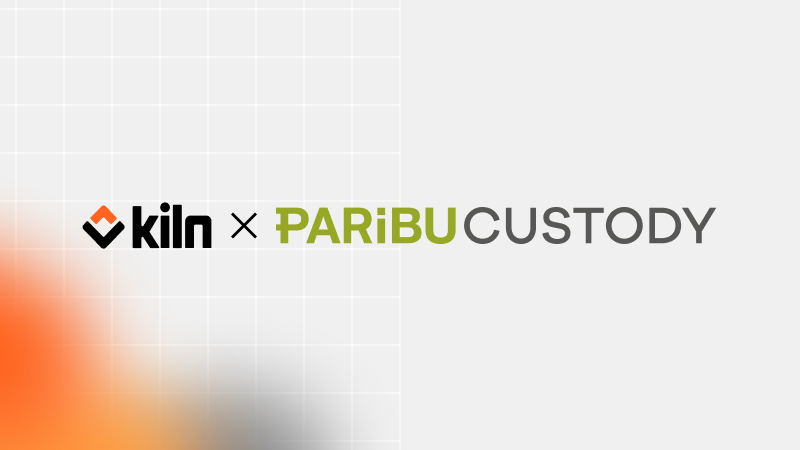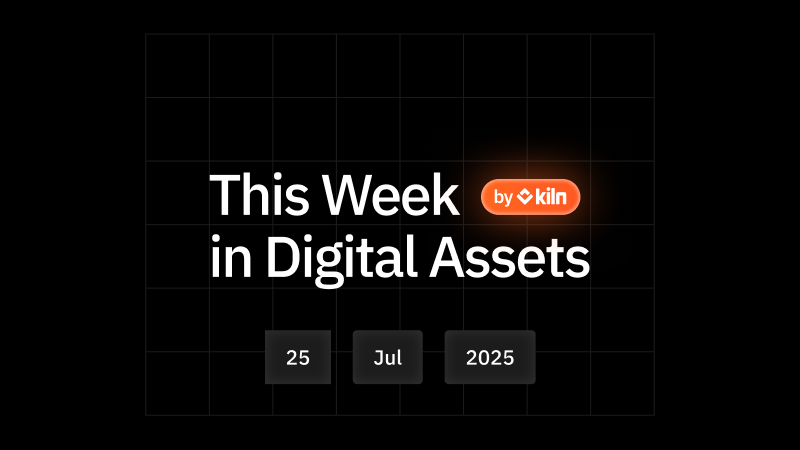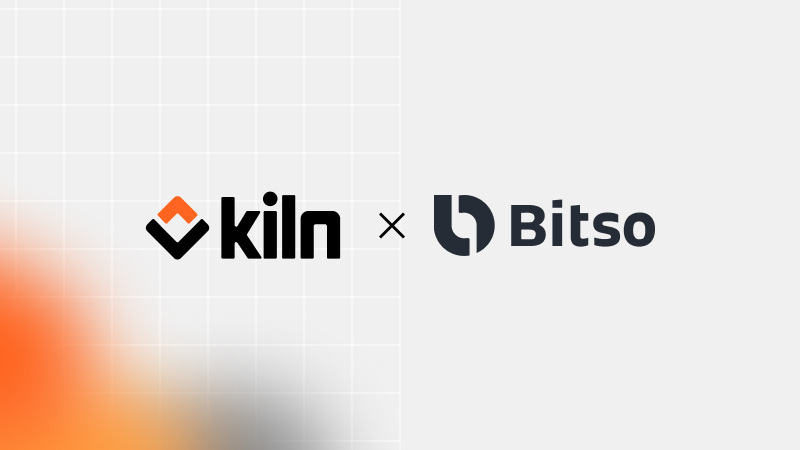Recently, AltLayer has attracted a lot of attention. Towards the end of January, they introduced their token, which led to a surge in trading activity and the start of user airdrop claims. Their most recent move, unveiled on February 14th, involves an SDK tailored to streamline hyperchain deployment on zkSync. So you might have noticed this project, but do you truly understand what they're doing?
That's exactly why, here at Kiln, our Protocol specialists are sitting down with the founders to understand and explain the details of such projects and to clarify the AVSs purposes within the Eigenlayer staking ecosystem.
In the 2nd episode of our restaking series dedicated to AVSs, we bring you Amrit Kumar, COO of AltLayer, in conversation with Edgar Roth, Protocol Specialist at Kiln.
But before we dive into the intricacies of AltLayer, let's begin by defining what a rollup is, especially since AltLayer operates within this framework.
What’s a rollup?
Essentially, a rollup serves as an off-chain mechanism crafted to scale a base layer, falling under the umbrella of Layer 2 solutions. A rollup L2 solution orchestrates the "rolling up" of transactions by aggregating them before dispatching them to the L1 chain, typically via a network of sequencers. This process can encompass a multitude of transactions within a single rollup.
As Amrit shows, there exist two primary types of rollups:
- Optimistic Rollup: Here, transactions are dispatched to a sequencer, which arranges and executes them to formulate a block. Subsequently, the sequencer disseminates the state and transactions of this block on Ethereum. The correctness of this state can be checked by anyone. If there are mistakes, participants can dispute them by providing evidence of errors in the processing. Optimistic rollups prioritize efficiency by validating transactions solely in case of disputes.
- ZK Rollup (Zero-Knowledge Rollup): In contrast, ZK Rollup operates on a validity-proof model. A cryptographic proof is generated for every transaction submitted to the chain to validate its accurate processing. These proofs are examined on the Ethereum network to ensure the integrity of each transaction. ZK rollups prioritize security by providing cryptographic proofs for every transaction, strengthening trust in the system.
How does AltLayer work?
AltLayer is an open and decentralized protocol designed for rollups. Initially, AltLayer focuses on making it easier to deploy application-specific roll-ups through its RaaS service, Roll-up as a Service, streamlining the process for users. Its possible uses cover a wide range of areas, with a special emphasis on the gaming industry, as highlighted by Amrit.
Furthermore, AltLayer is leading the way in introducing the concept of "restaked roll-ups" in collaboration with Eigenlayer. This innovative approach enhances the security, decentralization, interoperability, and economic finality of current roll-ups such as OP Stack, Arbitrum Orbit, ZKStack, and Polygon SDK, among others.
Rollup-as-a-service (RaaS): what is it?
Rollup-as-a-Service (RaaS) embodies a streamlined solution for launching custom application-specific rollups. Analogous to software-as-a-service, users are spared the intricacies of managing software and hardware. Developers are furnished with either SDKs or a dashboard to kickstart rollups tailored to their applications, sans the necessity of handling node operation or code upkeep. During the interview, Amrit underscored that presently, the majority of Altlayer's clients are leveraging their RaaS (Resource as a Service) offerings. However, the intention is to gradually transition them to the AVS format once it's fully fleshed out later in Q2 post EigenLayer’s mainnet rollout.
Rollup-as-a-Service (RaaS) offers a simplified solution for launching custom application-specific rollups. Similar to Software as a Service, users are relieved of the complexities of managing software and hardware. Developers are provided with either SDKs or a dashboard to start rollups tailored to their applications, without needing to handle node operation or code maintenance. During the interview, Amrit emphasized that currently, most of Altlayer's clients are utilizing their RaaS (Resource as a Service) offerings. However, the plan is to gradually transition them to the AVS format once it's fully developed later in Q2 following EigenLayer’s mainnet rollout.
Amrit is a strong believer of AVSs and restaked rollups. After extensive discussions with many of his clients, he found that they are increasingly seeking greater decentralization. Unlike RaaS, which tends to operate within closed systems, clients may yearn for functionalities such as leveraging multiple sequencers concurrently.
Which types of AVSs Altlayer offers?
Within the EigenLayer restaking ecosystem, Altlayer offers three types of AVSs (Actively Validated Services):
- SQUAD: Decentralized sequencing AVS. It enables decentralized sequencing by allowing users to specify the number of sequencers they want to use. SQUAD acts as an AVS for this purpose.
- VITAL: Verification AVS. VITAL provides verification services to ensure correct behavior within a roll-up system. It integrates the verification process directly into application-specific roles, enhancing security and efficiency.
- MAC: AVS for faster finality. MAC aims to provide stronger economic guarantees for transaction finality compared to traditional sequencers. It enhances the reliability of transaction processing by offering economic incentives.
During the discussion, Amrit highlighted the importance for stakers to learn more about AVS projects. This will enable them to effectively influence operators to rally behind their preferred AVS.
To delve deeper into AltLayer's tokenomics and explore the future trajectory of Rollup-as-a-Service (RaaS), we urge you to watch or listen to the complete episode.
And if you missed our inaugural episode featuring Sreeram Kannan, CEO from EigenLayer, be sure to catch up! As a refresher, EigenLayer, an Ethereum-based protocol, introduces restaking, a pioneering concept in crypto-economic security. This feature empowers users to leverage their ETH on the consensus layer to fortify additional applications on the network beyond Ethereum, offering users enhanced rewards.
Stay tuned for our forthcoming episodes featuring EigenDA, Lagrange, Witness Chain, and myriad others in the weeks ahead.
Happy listening!
About Kiln
Kiln is the leading staking and digital asset rewards management platform, enabling institutional customers to earn rewards on their digital assets, or to whitelabel earning functionality into their products. Kiln runs validators on all major PoS blockchains, with over $11 billion in crypto assets being programmatically staked and running over 5% of the Ethereum network on a multi-client, multi-cloud, and multi-region infrastructure. Kiln also provides a validator-agnostic suite of products for fully automated deployment of validators and reporting and commission management, enabling custodians, wallets, and exchanges to streamline staking or DeFi operations across providers. Kiln is SOC2 Type 2 certified.



















